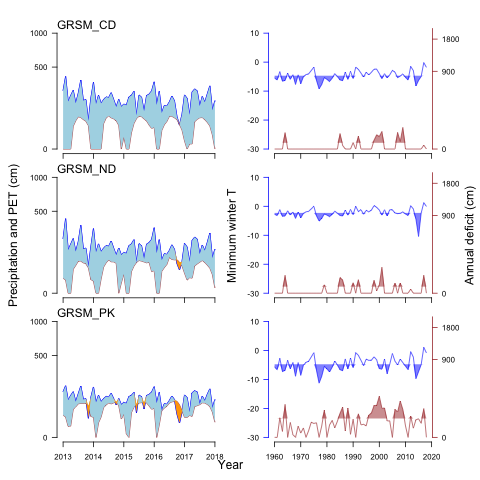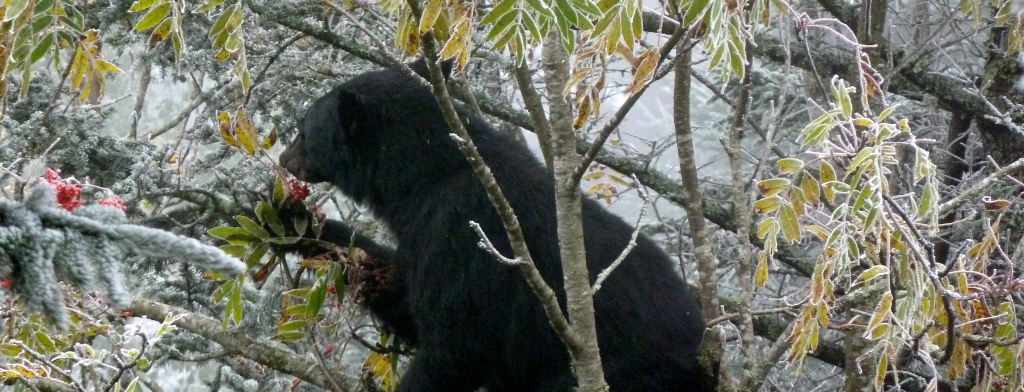Great Smoky Mountains National Park (GSNP)
2011 – present
Great Smoky Mountains National Park supports old-growth and successional stands initiated as recently as the time of park establishment in 1934. Much of the landscape was logged or farmed into the early 20th century. Vegetation ranges from hardwood/pine stands at low elevation through northern hardwoods and spruce-fir at the highest elevations. Moisture gradients span xeric Pine-dominated stands to cove and riparian hardwood sites with especially high tree diversity. Our plots were established in 2010 to better understand dynamics at higher elevations than we had access to elsewhere in the Southeast. Paul Super at NPS facilitated permitting and field sampling logistics.

GSNP-PK at Purchase Knob is our lowest elevation site in the park, with a mixed hardwood canopy and sparse understory. It is a 45 min hike from the NPS office at Purchase Knob. Some trees at this site had tags; we were unable to determine who studied this stand in the past.

GSNP-ND at Nolan Divide is dominated by spruce-fir. Wind damage is everywhere on this east-facing slope, with interrupted canopy and substantial regeneration. It is accessed from the road leading up to Clingman’s Dome.
GSNP-CD at Clingman’s Dome is a short-statured spruce-fir stand interrupted by a dense shrub understory. This stand lies west of the Appalachian trail.
Climate data include our own sensor data here and the compilation of Fridley (2009, J Appl Meteorol Climatol 48:1033).

At left are stem and seed trap counts for two years, including Picea rubens and Abies balsamea, at Nolan Divide. Many Picea are reproductive, with Abies dominating the regeneration stage.


